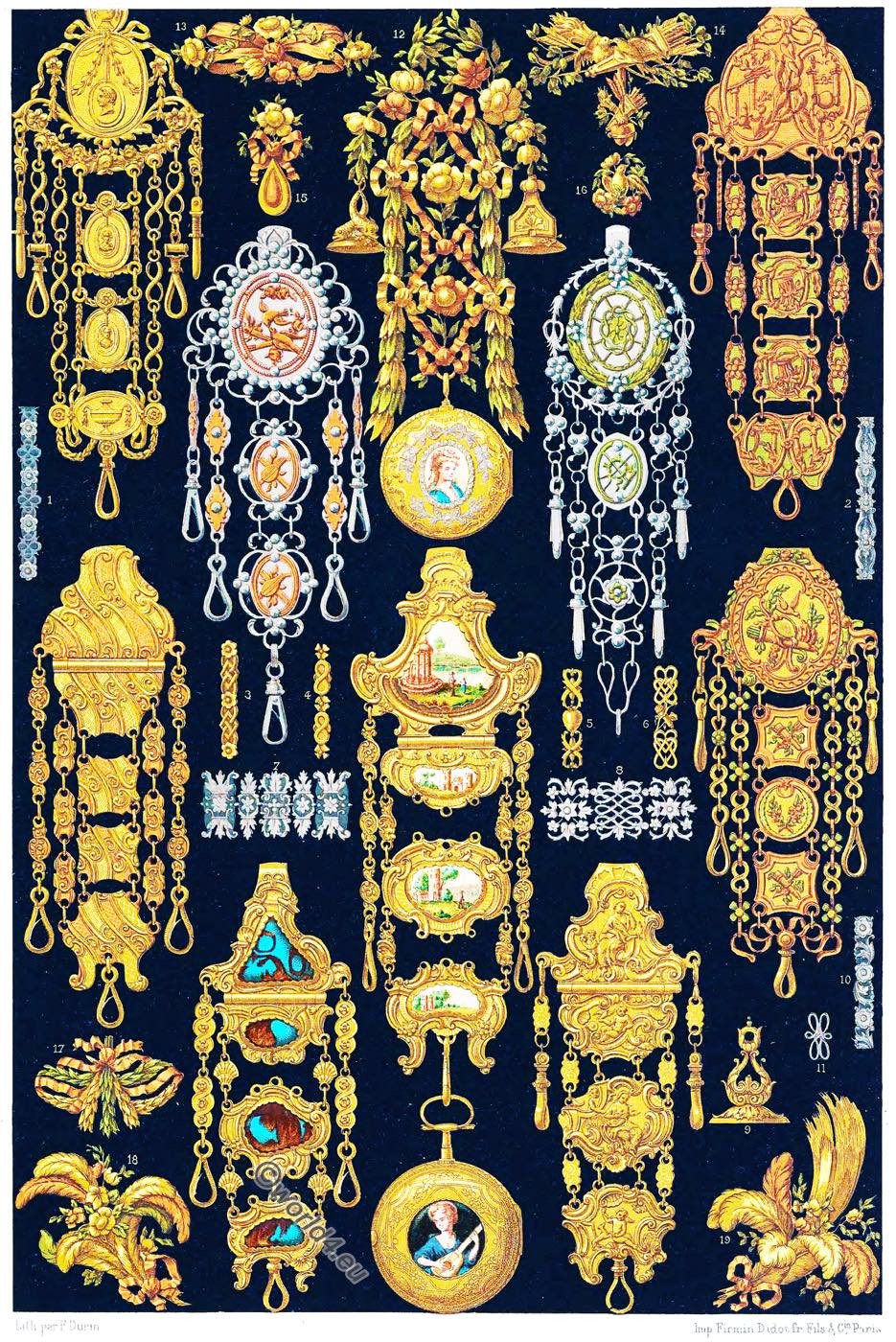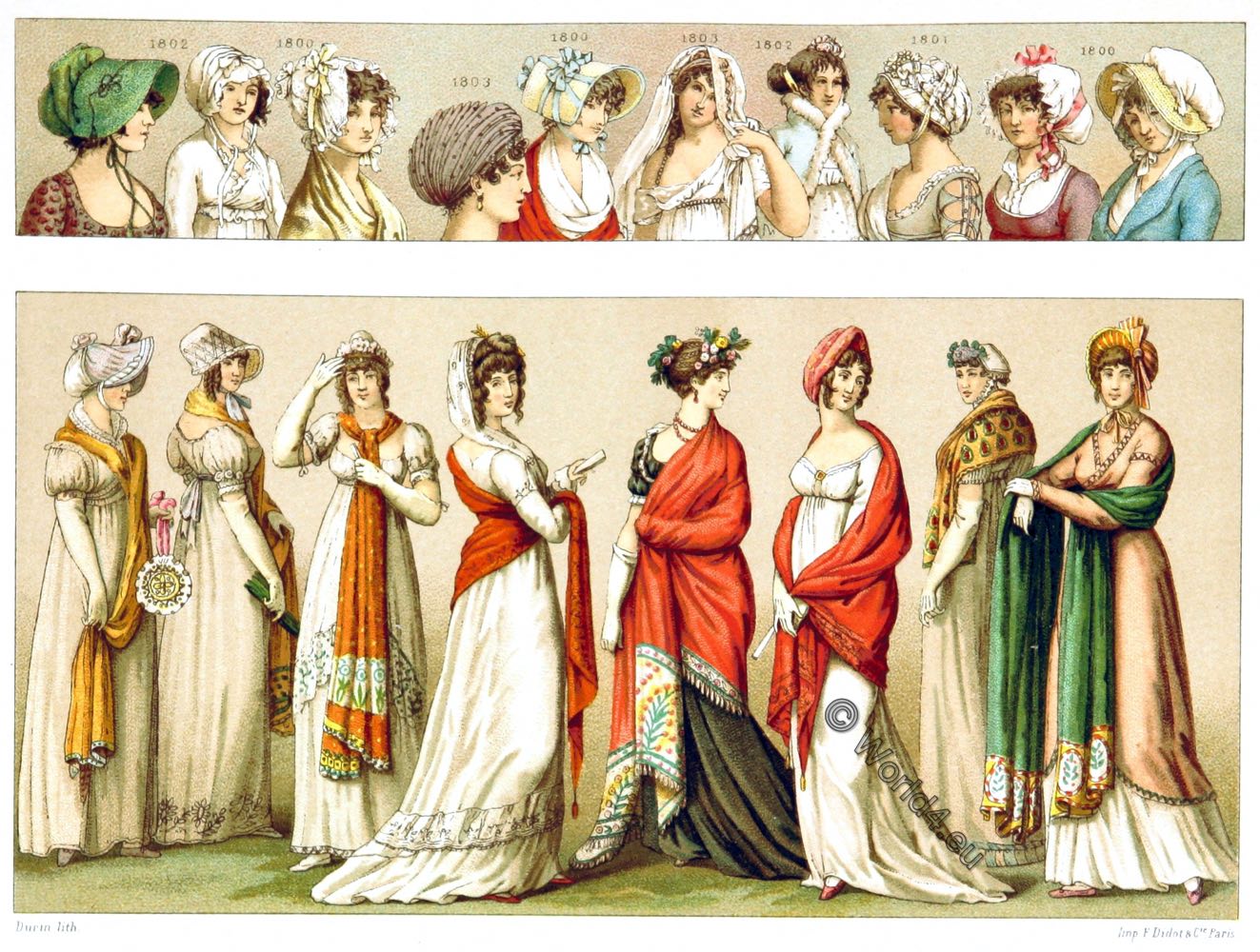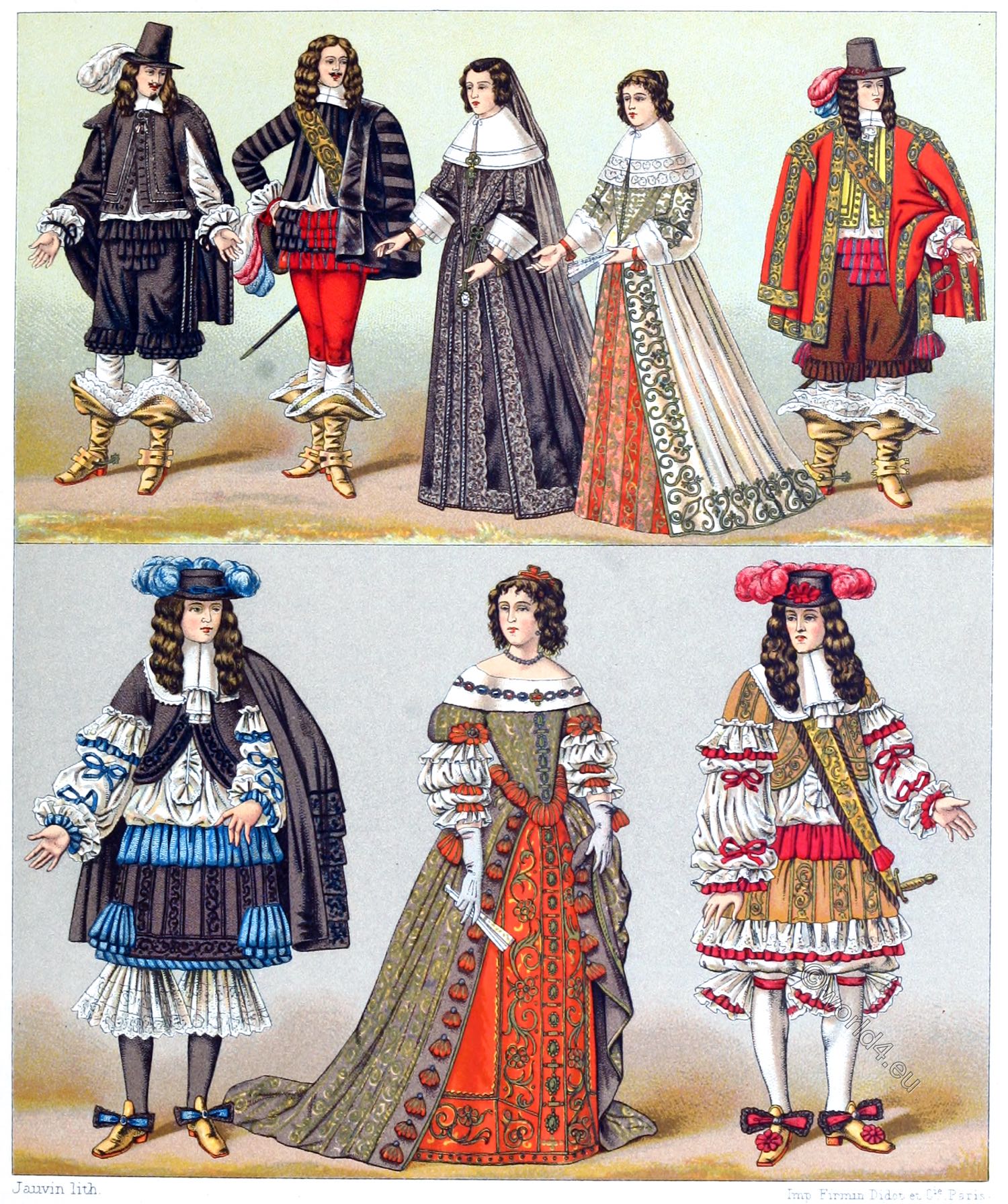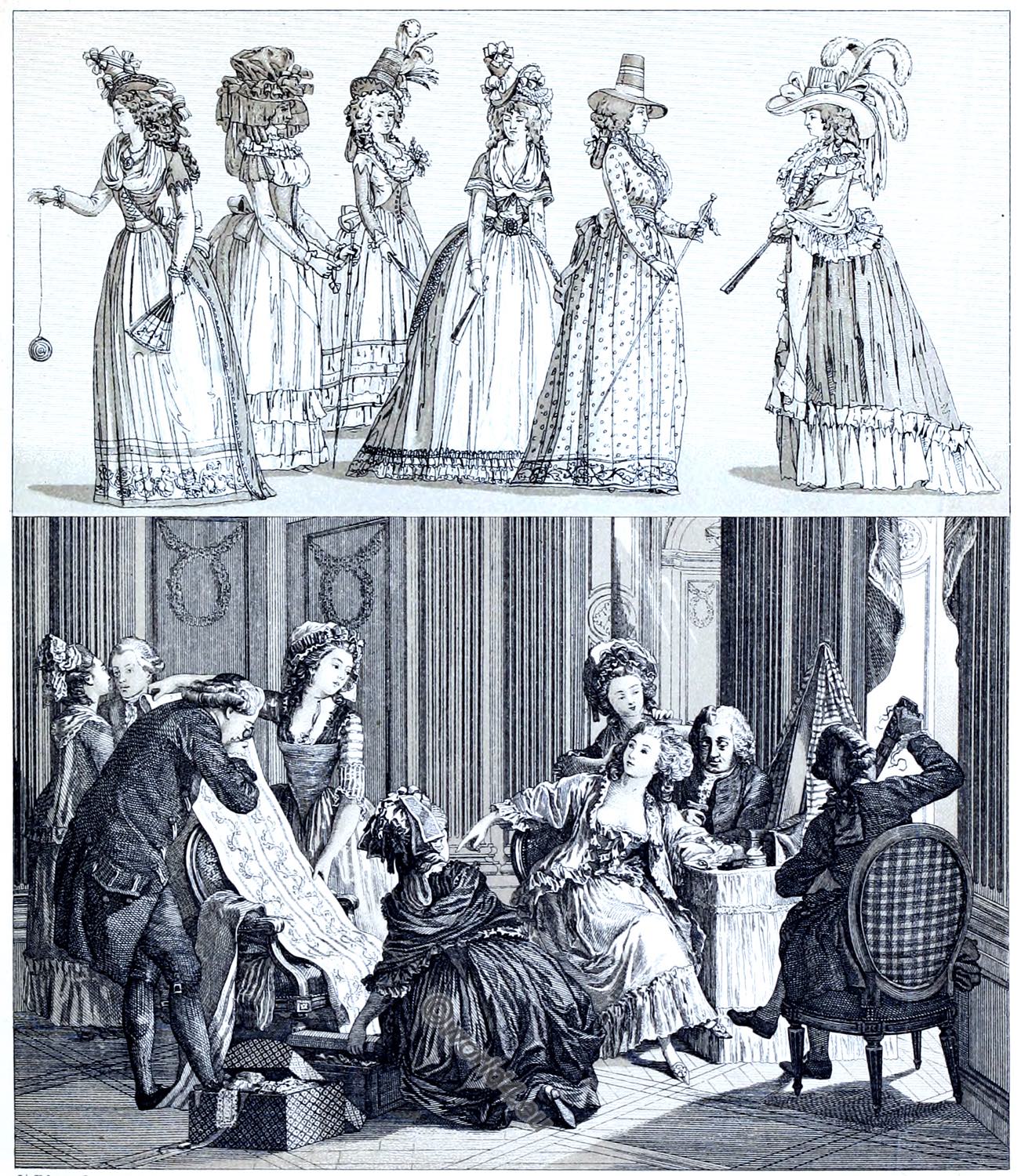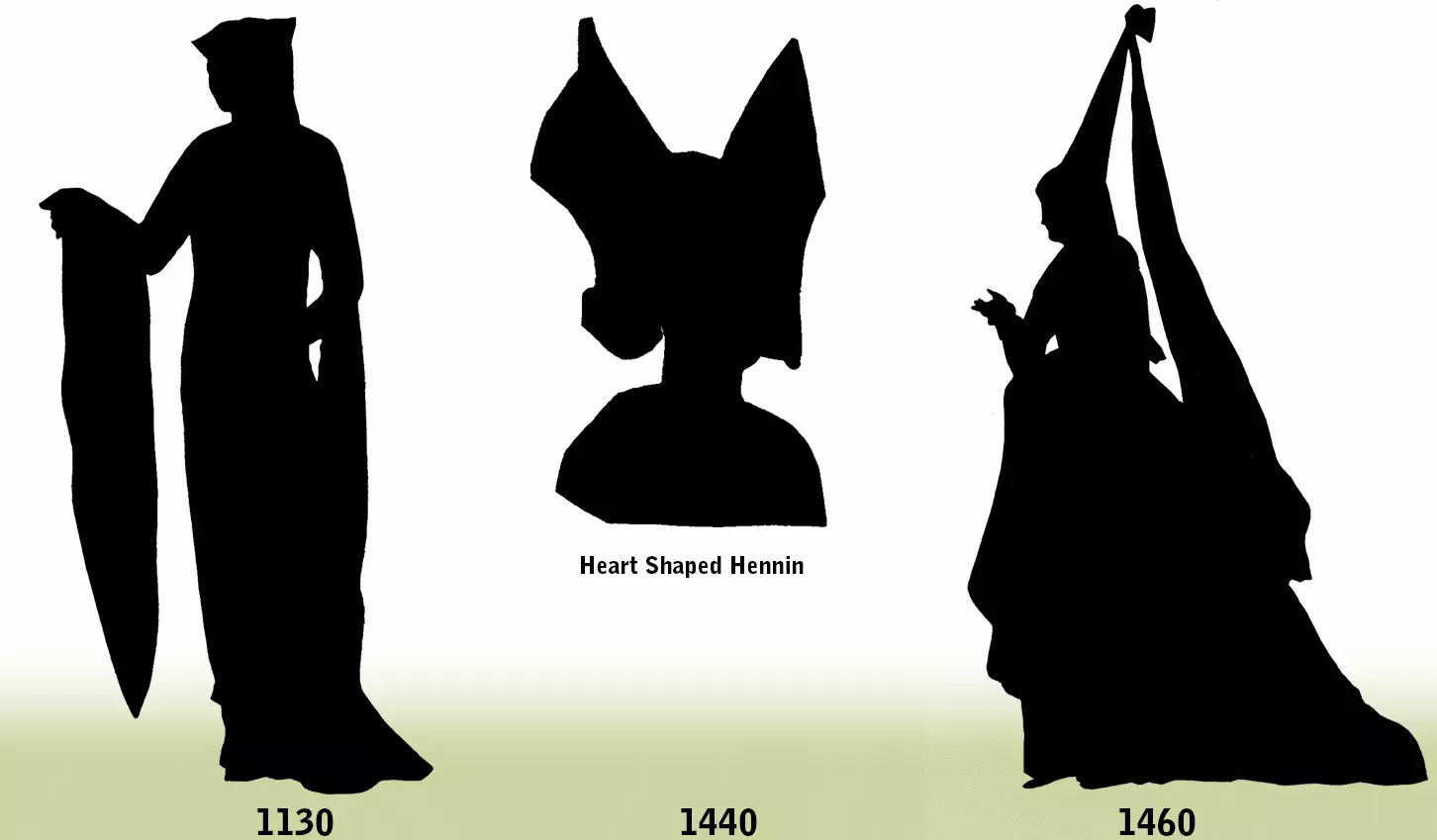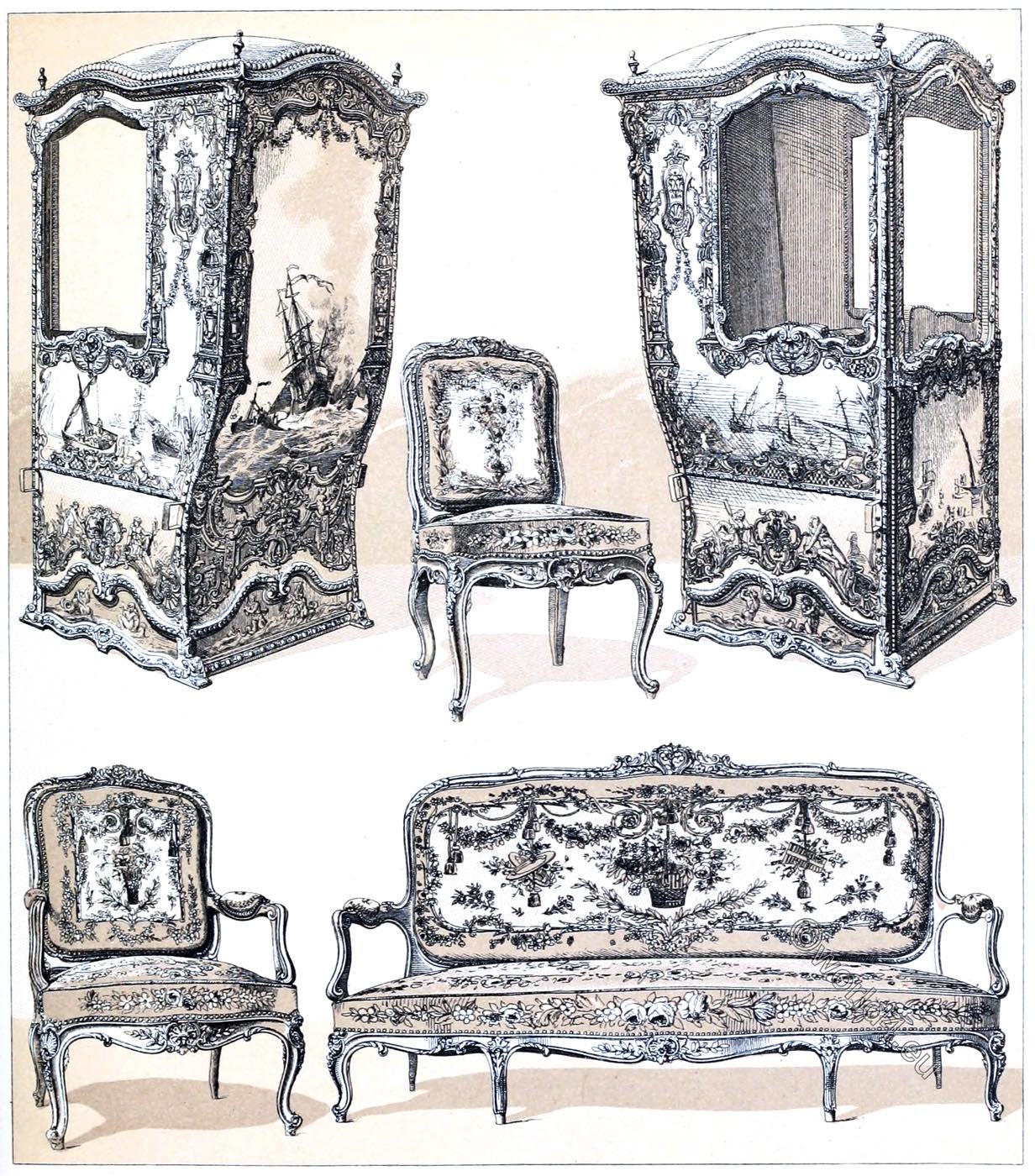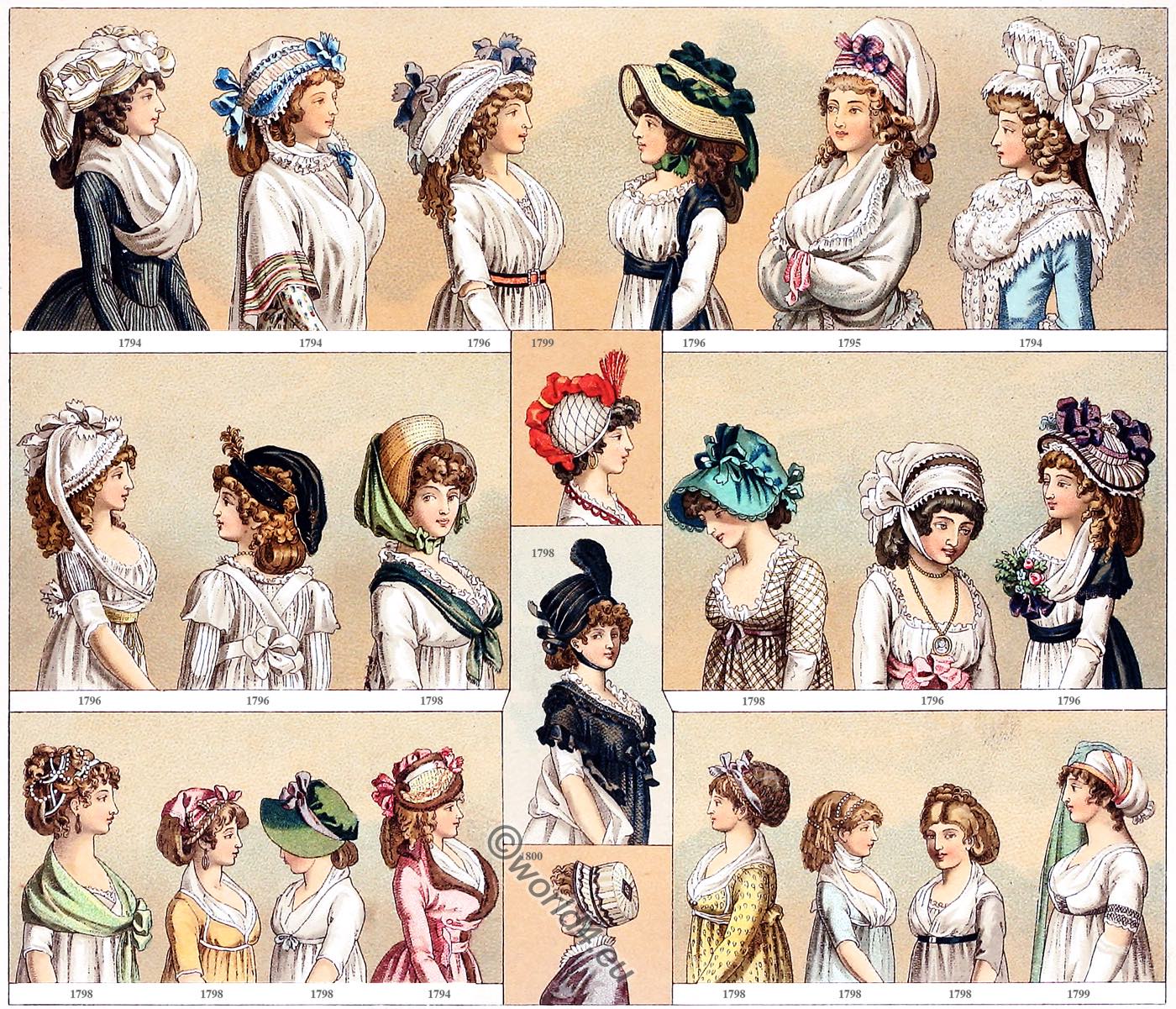
FRANCE 18TH CENTURY.
FEMALE COSTUMES AND FASHION FROM 1794 to 1800.
Until 1794, the female costume was preserved in the forms that had developed around 1790. The waist lengthens more and more under the pressure of a whalebone corset and the narrow sleeves of the skirt descend to the wrist.
The Postiche or Cul, a lapel or half skirt gathered together at the back, reinforces the development of the dress backwards, while the wide bandana of linon, the Fichu menteur, goes up to the neck and swells over the chest. Above the fichu they also wore a bodice made of Chinese crepe or a lap jacket open at the front, the caraco. The real transformation consists only in the use of the fabrics. The striped one was replaced by plain colours. One avoided the use of silk and preferred to use canvas from Jouy (Toile de Jouy). The buckles of the belts were made of copper and steel.
The hairstyle consisted of hanging curls and a chignon hanging down on the back (topknot, dut), so it was very low. Above this hairstyle, which Marie-Antoinette had brought into fashion since 1785, people wore hats or caps. In 1794 the caps still had some of the exaggerated extension that had been given to hairstyles a few years earlier. They had become almost universally fashionable, and people no longer wore the tall, straight hats, modelled on men’s hats, which English fashions had introduced in France in 1786.
The physiognomy of this costume disappeared almost suddenly. Apart from the arrangement of the hair, in 1796 you will find neither the fishbone corset, nor the long waist, nor the smooth skirt. The postiche and the fichu menteur are worn together. The delicate colours, the predominant white, the ribbon belts, the dress folded at the breast, recall in character and colour the era of the reign of Queen Marie-Antoinette when she was worn à l’enfant.
Reason and fashion do not go hand in hand for long. This comfortable costume, in which the belt was attached at a normal height, was soon followed by the close-fitting dress, the robe collante, whose belt was pushed up close to the bosom, and the hair and headdress borrowed from the ancient statues.
The low hair tour that we mentioned had only been modified when, to resemble the sacrifices made for the guillotine, the hair was combed or cut from the neck, à la sacrifiée; but that was temporary. One continued to display abundant hair, naturally with the help of wigs, with chignons, toupees, and more or less numerous side curls. “In the morning a blonde wig, in the evening a black one,” says the Journal des Dames et des Modes in 1812 in a review. This was the last link with the fashions of the past. When the taste for Greek and Roman antiquity became more and more popular, people wore short hair, styled à la Titus, and all those kinds of braids and ribbons with which Greek women used to decorate their hair. The wig disappeared, but the hair was dyed. Hats of straw or cloth were worn, tied together under the chin, like the hat à la Lucarne, or capots, which were tied together over the head and covered the forehead and the ears, but left the neck free.
As for the rest of the costume from 1796 to 1800, it could be said that its main purpose was to prove the truth of the statement made at that time: “In women, only that which is beautiful in them is good”. The close-fitting skirt of light fabric with the narrow belt under the bosom and the simple battist shirt underneath made all shapes stand out. The feminine charms, even if slightly veiled, were displayed without restraint, “Your mothers”, says the above-mentioned journal in 1812, “went a little further than merely letting their bosoms be guessed”.
(According to fashion magazines of the time)
1) L’Ami des femmes ou Lettres d’un médecin par J. P. Marie de Saint-Ursin. Paris, 1805.
Source: History of the costume in chronological development by Auguste Racinet. Edited by Adolf Rosenberg. Berlin 1888.
Related
Discover more from World4 Costume Culture History
Subscribe to get the latest posts sent to your email.

